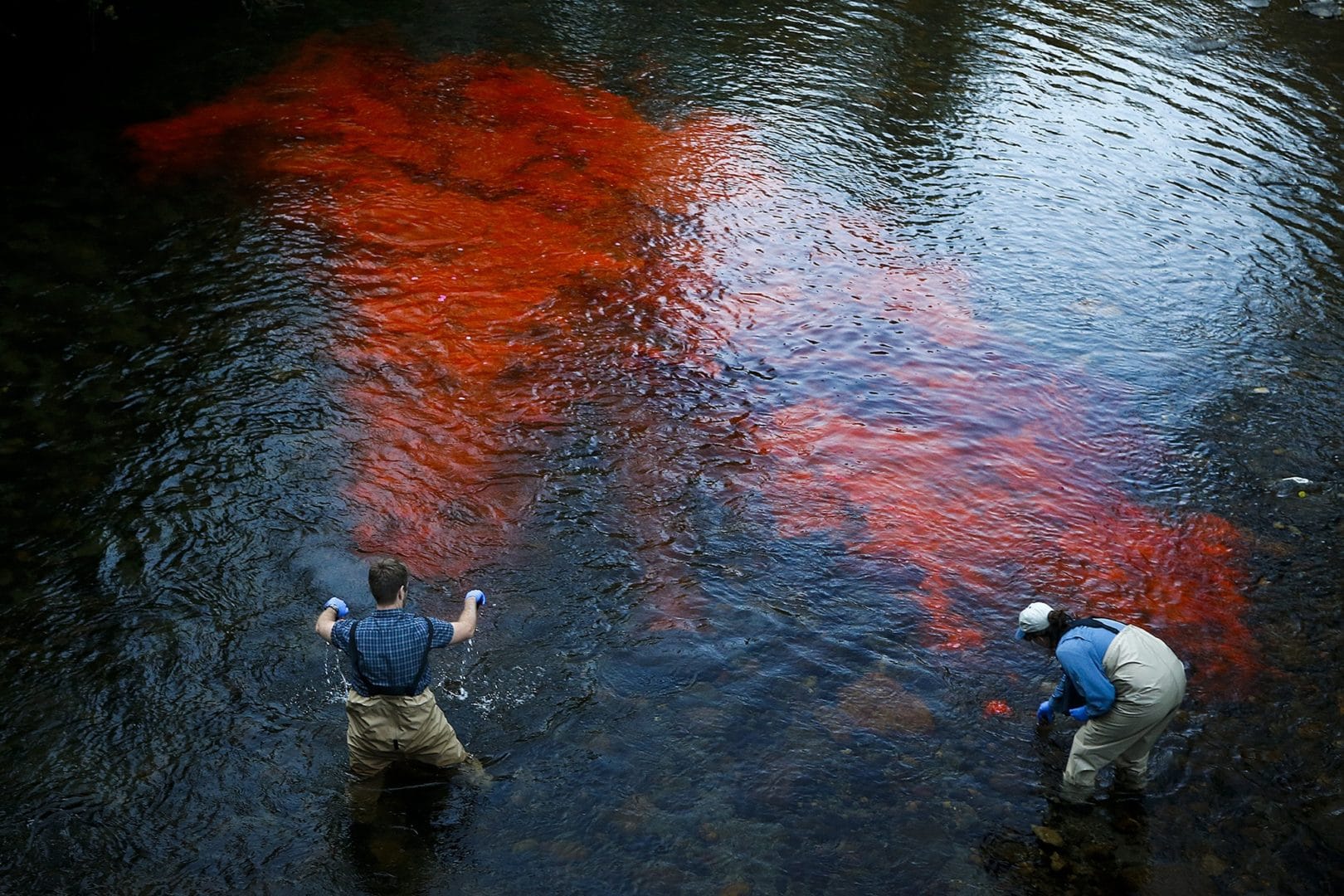
Nutrients Algae Oxygen Impacts
Oxygen is as essential for life to creatures that live under water as it is for people and animals on land. In water it is called “dissolved oxygen” (DO). Too little oxygen and fish get sluggish and die. Dissolved oxygen levels are affected by a variety of human and natural impacts. High temperatures cause gases to expand and drive oxygen out of the water. Slow moving waters lose oxygen while fast moving water increases it. Rotting material consumes dissolved oxygen, lowering its levels. But growing plants release oxygen into the water as they photosynthesize. Many of these impacts are seasonal and change over the course of a day, causing levels of dissolved oxygen to rise and fall in complex patterns.
When dissolved oxygen levels drop too much, “dead zones” are created. These dead zones are caused by “eutrophication,” which starts when too much fertilizer causes too much algae to grow, blocking sunlight from plants that are a part of natural habitats. Eventually the algae dies and falls to the bottom of the waterbody. There, the bacteria that decompose the dead algae suck oxygen from the water, causing toxic conditions.
So, what is this fertilizer that starts it all? Called nutrients as a group, the primary fertilizers of algae and other rotting plants are nitrogen and phosphorus. Both come from so-called point sources—primarily sewage treatment plants—and nonpoint sources—the polluted runoff from farms, on-site septic systems, dairy operations, and logging activities. Sometimes nitrogen is the biggest problem and sometimes it’s phosphorus but sometimes it’s excessive amounts of both together.
The sources of nutrient pollution don’t want to spend the money to reduce nitrogen and phosphorus in their wastes whether they are cities or farmers. And state regulatory agencies, such as the Washington Department of Ecology and the Oregon Department of Environmental Quality, don’t want to create the political pressure to clean up nutrient pollution. The U.S. Environmental Protection Agency (EPA) has been very gently prodding states to take the first step—adopt water quality standards for nutrients—but most states refuse, and EPA acquiesces. All the agencies continue to dance around the issue, while every year algal blooms expand, dead zones grow more vast, and nitrogen creates worse areas of ocean acidification.
